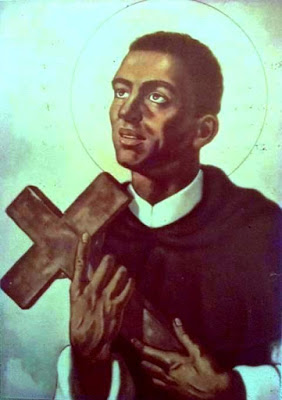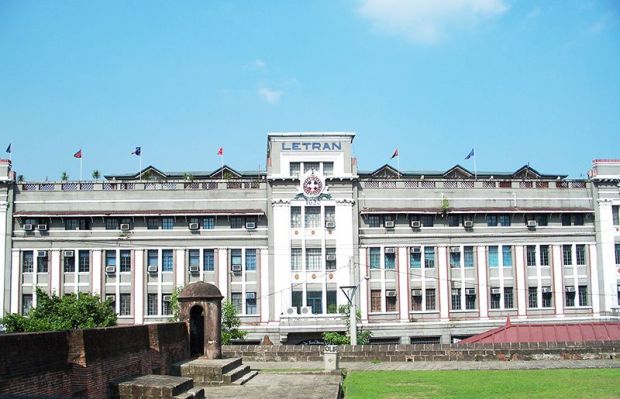
We are living in the world that civil rights, demand for racial equality and activism became much prevalent and important than ever before since the early years of the 20th Century. However, these movements became tainted when some of its prime movers are straying away from its noble intentions to destruction of all sorts, especially when they opted God out of these movements to create a better world. It was in these times that Our Lord raised St. Martin de Porres, a colored Dominican Lay Brother Cooperator from Lima, Peru, to be the Patron of Social Justice (which didn’t exists during his time) to guide the faithful in these societal changes that we are witnessing and experiencing at this present moment.
For this blogpost, we are going to have a look on the devotion to St. Martin de Porres in the Philippines and a clandestine event in our Church history that links him with the Catholic Church in the Philippines.
The Life of St. Martin de Porres

Martin was born in Lima, Peru in 1579, the son of a Spanish knight, Don Juan de Porres, and the former Panamanian slave Ana Velazquez. His father initially refused to acknowledge the boy publicly as his own, because Martin, like his mother, was black. Though Martin’s father later helped to provide for his education, his son faced difficulties because of his family background.
At age 12, Martin studied to be a barber, which at that time meant he was also a physician and a surgeon. Once trained, he began to use his skills to serve the poor. He became very well known for his compassion and skill as a barber and cared for many people as well as animals.
Martin was a pious child, who began praying at a young age. He had a deep devotion to our Lord’s Passion and prayed for discernment to know how he could show his gratitude to God for this great sacrifice. He believed that God was calling him to a religious vocation. When Martin was fifteen, he began working with the Dominicans as a lay brother cooperator at the Dominican Friary in Lima, where he worked as a barber, a farm laborer, a clothier, and a caregiver for the sick. Each day Martin distributed food to the hungry, nursed the sick, and helped to found an orphanage and a hospice for abandoned babies.
Martin devoted himself to severe penances. In turn, God endowed him with many graces and an abundance of spiritual gifts like visions, ecstasies, healing, supernatural understanding, and bilocation. Some of his peers said they encountered him in places as far off as Japan even as he remained in Lima.
Martin’s kindness and his love of prayer and humility helped him become friends with many people from all social classes, which enabled him to alleviate the suffering of many. His popularity allowed him to use all of his extraordinary gifts to serve the poor and to work diligently to promote their cause. Thus, he was nicknamed “Martin of Charity.”

In his ministry, he would later meet St. Rose of Lima, a lay Dominican (the first Saint of the Americas), and St. Juan Macias, also a Dominican lay brother cooperator and immediately became good friends because they share their love for God, the Blessed Mother, and their neighbor. The three holy Dominicans of Peru are also known for their extreme penances and he would be often seen experiencing ecstasies and other supernatural phenomena together. Their friendship was so strong that even after their death, the mortal remains of these saints are kept and venerated together at the Basilica of Nuestra Señora del Santisimo Rosario in Lima, Peru.
St. Martin’s love was shown equally to humans and to animals, including mice. Like St. Francis, Martin treated animals as brothers and sisters and they did whatever he told them to do. He maintained a hospital for cats and dogs at his sister’s house.
He died at age fifty-nine on November 3, 1639, and was canonized by Pope St. John XXIII on May 6, 1962. His feast day is celebrated every November 3.
His Bilocation in the Philippines

St. Martin wanted to be a missionary but did not fulfill that dream, but that did not prevent him from appearing mysteriously to the missionaries when they were going through some difficulty during their services in distant lands.
It is said and reported that he was seen several times in places like Mexico, China, Japan, Africa, the Philippines, and perhaps in France; Knowing that he always worked from the monastery and never left Lima.
The following account is a translation from the Spanish text on this extraordinary event in the life of St. Martin de Porres as recorded in the annals of Colegio de San Juan de Letran in Manila:

“God also wanted to show how pleasant the life of Fray Diego de Santa Maria (one of the founders of Colegio de San Juan de Letran) was, sent to his servant Friar Marin de Porres at the time of the building of the Church. It happened like this: It was established that a young man from Manila, named Francisco Ortiz, left for Mexico and from there he went to Peru. Visiting the Convento del Rosario of Lima one day, he met the lay brother Hermano Martin de Porres, whom he had raised as another Brother of the same Order in a school in Manila, where he took care of the orphaned, poor, and abandoned children, and he raised them with all charity and taught Christian doctrine, and also read and write.
While narrating this story, Blessed Fr. Martin expressed a great desire to see the aforementioned Fray Diego (the saints have always been envious of the virtues and works of caries of others that perhaps he did not heal them so much): but Francis noticed the impossibility for how far Manila was from Peru. After only three days, the young man returned to the convent and noticed that Brother Martin was with a very happy and joyful face as if waiting to surprise him. Francisco understood it in the smile of the Saint: and it was that God had granted him.
Venerable Martin had the grace to go that day to Manila and see Fr. Diego: and so he began to speak to Ortiz in the activities used in the Parian de los Sangleys, which reminded him in detail of the throne and the voice of the “Administrator de Letran”.
The development of devotion in the Philippines

The devotion to St. Martin de Porres in the Philippines came with the help of the Dominican Friars in the country. The St. Martin Center was established in Colegio de San Juan de Letran soon after his canonization in 1962 on the account of his bilocation to the Colegio that helped foster the devotion to the colored holy lay brother cooperator.
The center was later moved to Santo Domingo Church – the National Shrine of Our Lady of the Holy Rosary – La Naval de Manila in 1974 and it was renamed “St. Martin’s Guild.” In 1975, the Guild was listed in the Philippine Dominican Directory as an association under the care of the Filipino Dominicans. The Guild primarily aimed to coordinate numerous Filipino devotees of St. Martin at Santo Domingo Church and further propagated the devotion with votive devotional masses in his honor every Tuesday (then observed every Thursday in accordance with the pious tradition in Peru) and the distribution of bread to the poor and devotees. The votive masses, perpetual novenas, and bread distribution are also observed at Colegio de San Juan de Letran and at the Santisimo Rosario Parish in UST, Manila up to the present.
The Guild also does social action, given with St. Martin de Porres’ Patronage in Social Justice, by helping in the maintenance and operations of the Santo Domingo Free Health Clinic. They render free consultations, services, and other charitable works for the poor around the area of Santo Domingo Church. During the pandemic, the Lay Dominican Chapter at Colegio de San Juan de Letran distributed St. Martin bread to the poor and the needy in Intramuros on Tuesdays.
Another factor that leads to the popularity of the devotion to St. Martin de Porres is the devotion of the first Filipino Cardinal, Rufino Cardinal Santos, Archbishop of Manila. His motto in his coat of arms “Caritas in Dilectione” was inspired by the example of St. Martin de Porres that he later established Catholic Charities as he assumed his office in 1953 and was placed under his patronage. He was able to secure from the Vatican an apostolic brief that would allow the veneration of then Blessed Martin de Porres with mass, and divine office to be recited in all churches in the Archdiocese of Manila with his feast observed on November 6 until it was officially assigned on November 3 upon his canonization in 1962.
The devotion at present

The devotion to St. Martin de Porres prospered and spread all over the country from the moment the devotion was introduced. Numerous parishes, chapels, and barangays took him as their patron saint as devotees grew over the recent decades. He became one of the most powerful intercessors in these places due to the miracles attributed to his intercession.
The ultimate message in the life of St. Martin de Porres, the Patron saint of Social Justice, is the transforming power of love and nonviolence. Consider also, that when Jesus said “to love God and to love your neighbor as yourself,” it was not a suggestion. It was a commandment that was given to all those who would follow God’s law of love.
Despite the issues of society, there is much that is good in our world. The life of St. Martin de Porres reflects the unity, grace, and hope that are always present among God’s people. For in the hope of the resurrection, God’s triumph over evil always remains true.
To end this blogpost in his honor, we are sharing portions of the homily of Pope St. John XXIII during the canonization ceremony of the saint that points out the saint’s love for Christ that extend to his neighbors whom he saw as God’s children and his own brother’s love a “love that sprang from humility and an unclosed faith.”:
“He made every effort to bring sinners to repentance: he nursed the sick devotedly, procuring food, clothes, and medicine for those too poor to buy them. Peons, negroes, and half-castes who were treated as all but slaves, these he worked for to the limits of his abilities, offering them every help and tenderness until he truly deserved his popular title “Martin the Charitable”.
This holy man, who so powerfully drew men to God by his own words, examples, and goodness still has the power to help our minds up to God. Mary Martin’s example help as many as possible to realize, to their great spiritual good, that to follow Christ and to obey Him is our delight, that to follow Christ and to obey Him is our delight and blessedness.”
References:
Bazaco, E. “Historia documentada del real Colegio de San Juan de Letran.” Manila: Imprenta de la Universidad de Santo Tomas, 1933.
Blasco, Vicente Galduf, “Colored Saint Martin de Porres : biographical sketches”; translated from the original Spanish by Nick Joaquin, St. Martin de Porres Center, Sto Domingo Church, Quezon City, 1962.
“Devotion to St. Martin de Porres Santo Domingo Church, Quezon City, Philippines” Retrieved from http://notesfromthechoir.blogspot.com/2016/01/devotion-to-st-martin-de-porres-santo.html?m=1 on October 26, 2021.
Santo Rosario Magazine, Sto. Domingo Church, Quezon City, May 1962.
“St. Martin de Porres and Letran” Retrieved from https://m.facebook.com/story.php?story_fbid=4294210820603163&id=813428415348105 on October 25, 2021.
“What were the Miracles of San Martin de Porres?” Retrieved from https://www.lifepersona.com/what-were-the-miracles-of-san-martin-de-porres on October 15, 2019.
Photographs
Basilica del Santisimo Rosario y Convento de Santo Domingo, Peru
Inocencio, Glenn
Malabanan, James Benedict
